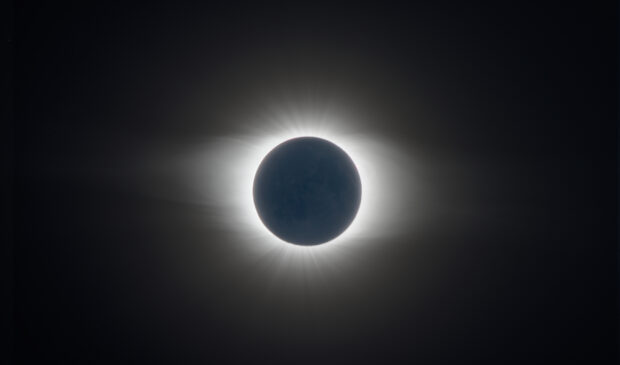About the Author
Chad Swiatecki is a 20-year journalist who relocated to Austin from his home state of Michigan in 2008. He most enjoys covering the intersection of arts, business and local/state politics. He has written for Rolling Stone, Spin, New York Daily News, Texas Monthly, Austin American-Statesman and many other regional and national outlets.
Newsletter Signup
The Austin Monitor thanks its sponsors. Become one.
Most Popular Stories
- Cap Metro to shelve 46 new electric buses for a year after manufacturer bankruptcy
- Mobility Committee hears public concern regarding expansion of MoPac
- Texas Attorney General Ken Paxton sues nonprofit that serves homeless in South Austin
- Red River music proponents see city funding as sign of support, progress
- Austin Energy proposes gas peaker units, not larger combined cycle plant
-
Discover News By District

City preps for eclipse visitors at a pace to rival SXSW nights
Thursday, March 7, 2024 by Chad Swiatecki
Next month’s solar eclipse is expected to bring a short boost for local hotels that could match some of the nine-day stretch of South by Southwest.
Austin’s location as one of the most opportune viewing spots in the path of the April 8 celestial phenomenon is luring tourists from far and wide, with city officials noting that hotel bookings in the lead-up could match the 80 percent to 85 percent occupancy rate that’s typical during spring festival season. A memo last week from Ken Snipes, director of the Office of Homeland Security and Emergency Management, outlined the steps the city is taking to prepare for the eclipse and issues related to public information, access to viewing the event and appropriate public safety measures.
The memo notes that as of January, data from Visit Austin showed the expected hotel occupancy rate in the days before and after the eclipse would reach 70 percent. New data from Visit Austin – taken from a sample of responses from 30 percent of downtown hotels and 10 percent of outside downtown hotels – showed that number for downtown hotels had climbed to 77 percent for the eclipse and the two days prior. Hotels outside the downtown core are averaging 68 percent occupancy.
Downtown hotels are currently averaging 78 percent occupancy for Sunday, April 7, while outside downtown hotels are averaging 75 percent occupancy for the same day. That’s a dramatic boost, since Visit Austin reports that Sundays typically are the lowest-demand night of the week. In April 2023, Sundays averaged 55 percent occupancy downtown and 53 percent citywide.
The travel technology company Expedia Group found that Austin is behind only Dallas as the top U.S. viewing spot for the eclipse. That’s translated into a 29 percent increase in daily stay prices locally, with short-term rental company VRBO reporting a 53 percent uptick over the same time last year.
In November, City Council approved a resolution directing the city manager to put together a plan for addressing the public safety matters related to the unique influx of visitors, while also seeking to make the event an opportunity for residents to celebrate the rare celestial occurrence together.
Libraries and other city facilities began hosting informational and educational programs related to the eclipse in February, with 14 libraries scheduled to hold watch parties or related events on April 8.
Snipes’ memo notes that the special eclipse page of the Ready Central Texas website includes details on how to view the event safely and info on where residents in Austin and the surrounding counties can gather for celebrations and watch events.
The Parks and Recreation Department will begin distributing 10,000 pairs of free viewing glasses beginning March 11, available at the Austin Nature & Science Center, recreation centers and senior centers. The glasses will also be available on a limited basis at Austin Public Library branches starting April 4.
Local 911 emergency communications staffing will be increased beginning the weekend prior to the eclipse through the Tuesday afterward. Austin Fire Department and Austin-Travis County Emergency Medical Services will prepare for increased staffing to support calls as needed.
KUT wrote that transportation and public safety officials are expecting pronounced traffic issues in smaller communities to the west of Austin, where there will be close to five minutes of daytime darkness. For comparison purposes, KUT reports a 2017 eclipse that passed over parts of Missouri and Kansas drew 5 million visitors.
Snipes’ memo spells out that Office of Homeland Security and Emergency Management and Travis County Office of Emergency Management are coordinating with outside agencies – including the Capital Area Trauma Regional Advisory Council, Capital Area Council of Governments and Texas Department of Transportation – to manage traffic jams that could keep cars traveling slowly if at all for hours at a time.
Photo by ESA/CESAR/Wouter van Reeven, CC BY-SA IGO 3.0, CC BY-SA 3.0 IGO, via Wikimedia Commons.
The Austin Monitor’s work is made possible by donations from the community. Though our reporting covers donors from time to time, we are careful to keep business and editorial efforts separate while maintaining transparency. A complete list of donors is available here, and our code of ethics is explained here.
You're a community leader
And we’re honored you look to us for serious, in-depth news. You know a strong community needs local and dedicated watchdog reporting. We’re here for you and that won’t change. Now will you take the powerful next step and support our nonprofit news organization?









